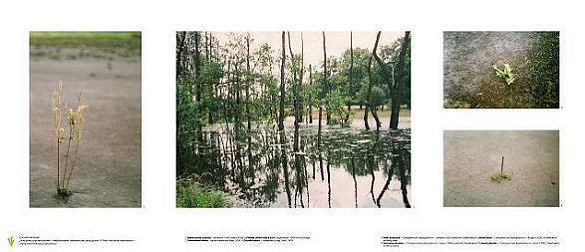
Description popularizing the research project
Imagine an experiment without endless rows of test tube racks and steaming flasks, without clinking laboratory glass and steady buzz of measuring equipment, without technical staff and a watchful eye of a professor surrounded by his assistants, finally with no certificates and attestation. You will say it is impossible but indeed there are laboratories where experiments with uncertain results are being conducted. Nobody even knows when the deadline and time to analyze the results and draw conclusions are.
These laboratories are patches of land which were used to gather waste materials extracted from several hundred meters underground. These are places deprived of the original vegetation and animals have just started examining the new territory. Spontaneous life develops slowly as some heap of rocks have been used as a training ground for Martian probes and various all-terrain vehicles.
These places are wastelands now which life tries arduously to reconquer. And what about the experiment? It is the Nature itself which never cares about indirect results of the experiment to draw conclusions. On the contrary, it wants the process to last as long as it is only possible. Ecologists, geobotanists, ecotoxicologists and sociologists of nature are people who appreciate and know the real worth of the 'experiments' carried out in the unplanned biological laboratory.
So, where is the certificate and attestation of the obtained results? These documents will be issued by Silesians going for a Sunday picnic to have a rest in the lush green countryside. So, let us not disturb the Nature.
The experiment is in progress.
Abstract
Post-industrial sites were for a long time considered as biological deserts, sites where no life is able to survive. Silesia is a region with the highest concentration of postindustrial sites in Poland. Among the Silesian post-industrial sites the post-coal mine sites cover the biggest area.
The aim of this study is to characterise the diversity of spontaneous plant communities and the dynamics of chosen phytocoenoses.
The investigation carried out on coal mine heaps and deep coal mine water sedimentation pools shows that flora of some of the objects is surprisingly rich. In 137 investigated sedimentation pools 453 vascular plant species were recorded. Plant communities which develop spontaneously on this kind of post-industrial sites are varied. Apart from the wide range of dry habitat plant communities there are also many wet habitat vegetation types such as rushes, representatives of Phragmitetea, Bidentetea tripartiti, Molinio-Arrhenatheretea and Artemisietea vulgaris class species. There are also many mono-species aggregations and on older heaps trees resembling woodland/forest communities are present.

